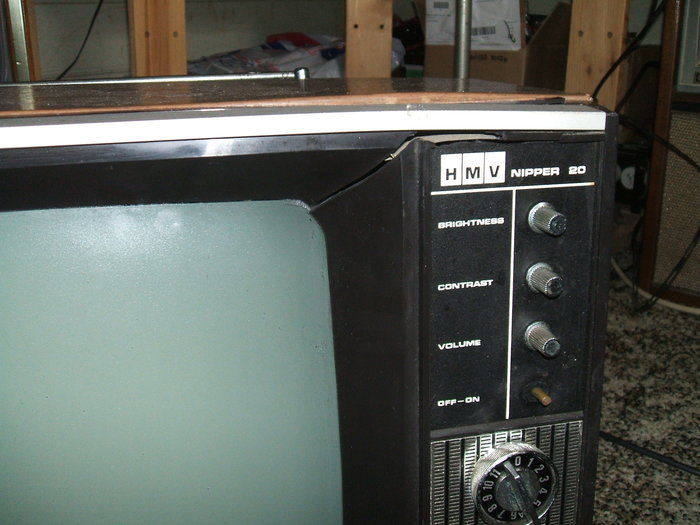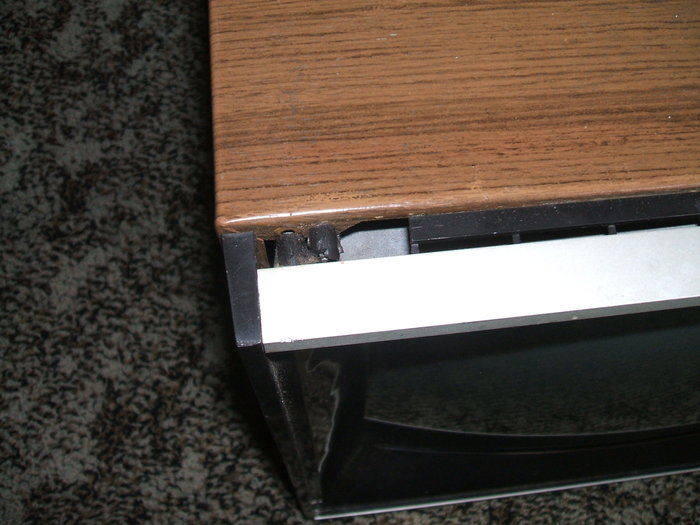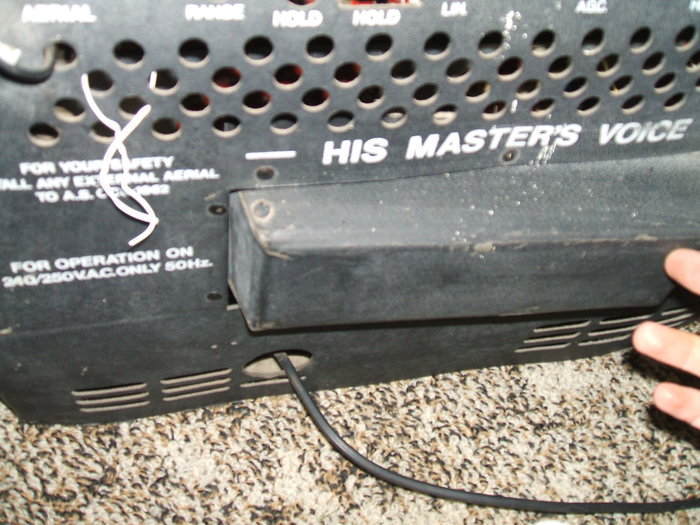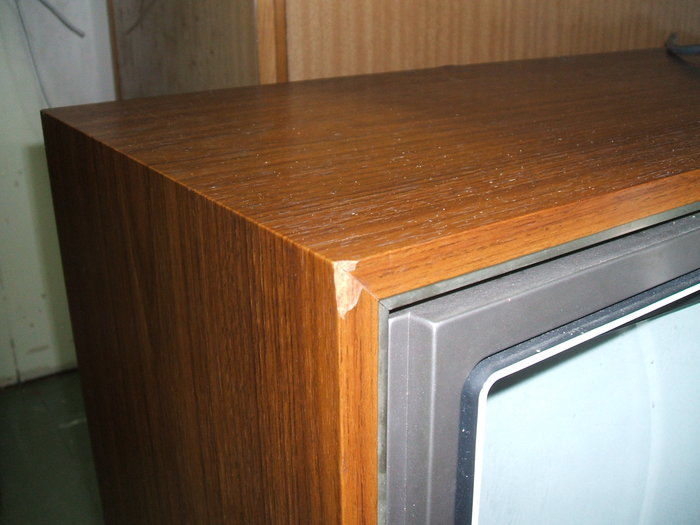Hiring out Vintage Television Sets - a good reason not to.
We've all seen the vintage radios, televisions,
and telephones in TV series, but where do they come from?
The answer is largely from collectors
like myself, once tracked down by production companies. In the first instance,
it was via an internet posting via an acquaintance, to the effect that
I had "one of the largest vintage TV collections in Australia".
Enquiries about my collection.
The production company concerned was doing
a mini series, set in the 1960's, and enquired as to what sets I had, and
would I be interested?
The hiring fee was quite good; it was
$700 for eight sets. The props buyer / hirer arrived at my house one morning
to have a look at what I had and what might be suitable. Photos were taken
of likely looking sets.
I was assured that utmost care would be
taken moving the sets to the filming location, and the sets would be carefully
looked after. There was also mention of insurance if anything did go wrong.
Still, I was a bit nervous about seeing
some of my sets depart, but it was an opportunity for fame, or so I thought.
Arrangements were made for collection,
and a van turned up with one person to help lift the sets out. With my
bad back I was expected to help lift out heavy console sets to the waiting
van. In the name of fame and a new experience I thought, so I complied.
I was informed the sets would be away
for six weeks, which was fine by me.
The sets I hired out were:
-
20" HMV VA portable.
-
12" GE compactron portable.
-
20" AWA 48 series semi portable.
-
23" AWA 50 series lowboy.
-
23" AWA 34 series console.
-
21" Kriesler 79-1 console.
-
21" Kriesler 79-2 console.
-
25" Philips lowboy.
The sets return - The HMV.
The first set to be extracted from the
van was the 20" HMV VA. The props buyer sheepishly explained it might have
been slightly damaged. That was an understatement.
The set had been dropped, bending the
steel cabinet and breaking the plastic cabinet front. The picture tube
neck surround on the back cover had been pushed in. That was really sad
because the cabinet and general condition of the set was much like new.

First sign of damage was the bent cabinet top and cracked picture
tube mask. (The on-off knob was missing prior to me hiring the set out)

Moving to the left top we see the mask mounting studs broken off
the cabinet.

The picture tube neck cover has been pushed in. The cardboard was
torn off the rivets.
It was very fortunate that all the broken
pieces of plastic had fallen inside the cabinet. After a week's work, I
had the cabinet straightened out and all the plastic glued together.
I then re rivetted the picture tube neck cover to the back where it had
been pushed in. The way this set was treated was clearly a case of "I don't
care, it's just a prop - kick it if it's in the way".
Further damage:
-
The 20" AWA 48 series had a cracked handle
surround. They reattached it with Blu-Tac.
-
The 23" AWA 50 series had slight chipping
around the veneer of the chipboard cabinet. A piece of adhesive tape had
been stuck on the back with "working" written on it. Upon trying to remove
the tape, the paint was pulled off the cabinet back.
-
The 23" AWA 34 series, model D65, had a dent
in the French polished cabinet, along the corner up the right hand side.
Again, a piece of tape was stuck to the back. Removing it damaged the smooth
Masonite finish.
-
The 21" Kriesler 79-2, "Silver Anniversary"
had a few extra chips removed from its French polished cabinet, and scratch
marks on the cabinet top. In the film, I noticed a model boat had been
placed on the cabinet. However, there was more: The set no longer worked.
When I took the back off, the 6CM5 was part way out of its socket. I also
noticed that a couple of old dead fuses I'd previously left on the bottom
of the cabinet had found their way up into the large metal shield surrounding
the tuner. Evidentally, the set had been tipped on its side or upside down.
What kind of treatment loosens an octal valve in a tight socket? Still
more damage: It appeared that someone had applied undue pressure to the
channel knob, possibly trying to lift the set by it. Two of the rubber
grommets mounting the tuner to the control chassis were broken. This set
required an evening's repair to put it back to how it was.
-
The 21" Kriesler 79-1. One of the three aerial
terminal screws was missing, probably due to vibration as the set was moved
around.
-
The 25" Philips had extra veneer chipped off
the bottom corners. Clear tape had been placed on the corners.
-
The only completely undamaged set was the
12" GE portable.
My second experience.
This time a request was made for a 1970's
colour set for a low budget TV series. The producers of this had learned
about me from the previous company. At the time, my other sets were still
out so I had no idea of the damage. Thus, I was happy to hire out a 26"
GE TC63L1.
Unfortunately, when the truck arrived,
the driver displayed a 'couldn't care less, it's just a prop' attitude.
There was no padding to wrap around the set and he didn't seem concerned
about damaging it.
When it returned, there was a chip in
the veneer. What was particularly disappointing was that it was an otherwise
pristine cabinet - the set had been hardly used since new.

Once a pristine, as-new cabinet, this prominent chip greeted me
upon this set's return. Right at the front to be seen by all.
Compensation.
Both companies were happy to cough up
some money for compensation; $200 for the first lot, and $50 for the 26"
GE, but unfortunately money doesn't fix broken plastic parts that are no
longer available.
To have the French polished cabinets redone
would cost much more than that. In fact, I got the impression that damaging
peoples prized possessions is commonplace; it seemed routine to pay compensation.
The props buyer then actually admitted, "I can't keep an eye on them all
the time".
The third request.
As a result of an article I contributed
to in the Sydney Morning Herald, a regional gallery made a request to borrow
a set for an exhibition lasting a few months. This didn't sound too bad
at first as it was nearby, and the set would just be on display. However,
I detected a bit of "I'm going to get used again". The organiser wanted
me to transport the set there at my cost, and to suit their times. They
seemed quite surprised that I have a 13 hr work day and I can't just make
the hour round trip during working hours. Yes, they could come and collect
the set, but only when it suited them.
No mention of being paid for the loan,
despite the interest the exhibition was supposed to attract.
What made me really start to feel uncomfortable
was when I enquired about the exhibition and was told it was interactive.
Visions of grubby hands on the cabinet, an evil child smearing its snot
on the picture tube face, missing knobs, plus miscellaneous scratches and
gouges, as the public pored over it, made me decide to pull the plug on
it. Memories of the 20" HMV reminded me never to risk it again.
Bad Attitude.
What I noticed in all three cases was
oodles of friendly charm to start with by the organiser. "We really depend
on people like you - it's so hard to find sets like this". "We take really
good care of them", they say.
But soon as you say "yes the sets are
available", that friendly charm disappears. They're not interested in hearing
anything about the sets themselves. "Who cares what year - it's a vintage
TV isn't it"? (That's why you see a 1974 solid state Electrohome
monitor in a mid 60's studio set).
After all, they've got my prized possessions
in their hot little hands to make money for them, and that's the bottom
line.
It was clearly evident that they are merely
props, and that is the only value they have. It is completely beyond them
that these sets are ones I've worked many hours on and are part of a highly
prized personal collection, and have a history. They are simply a background
ornament.
I did have ideas of having a few sets
in crappy cabinets to hire out, knowing they'd get damaged, but in the
end I'm just not comfortable with the way these people work.
Home





